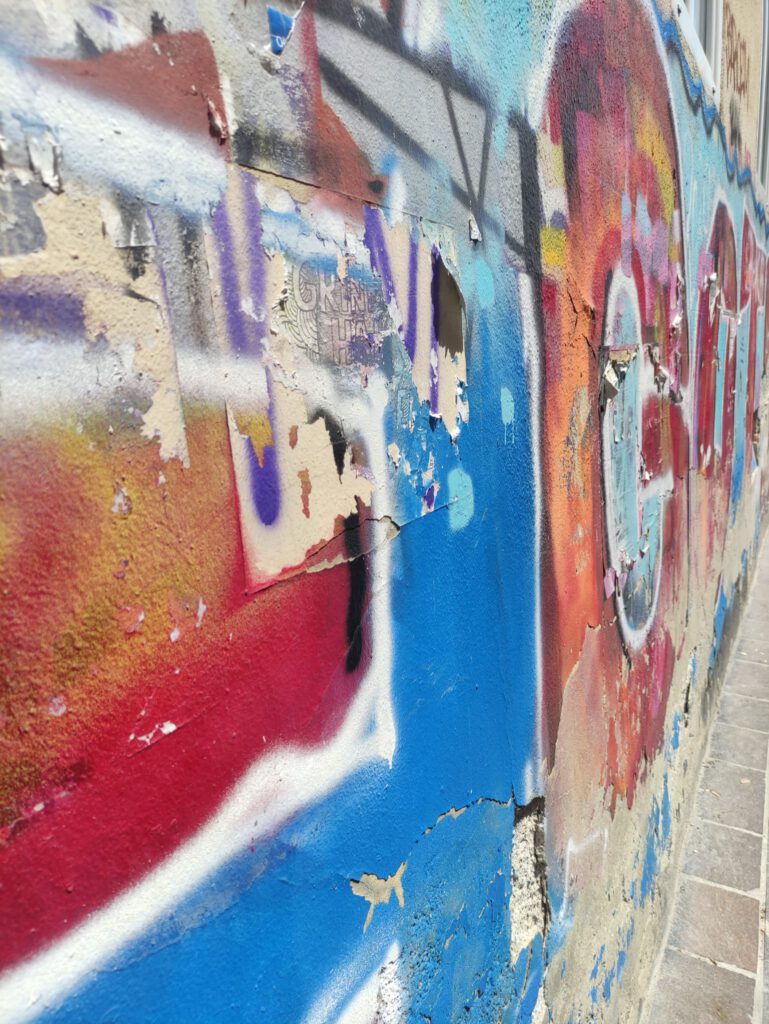The Story of Wall Abuse Graffiti: Understanding the Boundary Between Art and Vandalism
Wall abuse graffiti represents a controversial and often misunderstood aspect of street art. Characterized by its aggressive and destructive approach to urban surfaces, this form of graffiti raises important questions about the limits of artistic expression and the impact on public spaces.
The Concept of Wall Abuse Graffiti: Wall abuse graffiti refers to a style of graffiti that involves not only the application of paint but also the intentional damage or alteration of wall surfaces. This can include scraping, carving, or otherwise disrupting the physical structure of the wall in addition to painting. The term “abuse” highlights the aggressive nature of this approach, which often results in significant wear and tear on public and private properties.
Origins and Development: The origins of wall abuse graffiti can be traced back to the early days of graffiti, when artists experimented with various methods of marking urban spaces. As graffiti evolved, some artists began to push the boundaries of conventional practices, leading to the development of more destructive techniques. Wall abuse graffiti emerged as a response to the perceived limitations of traditional graffiti, reflecting a desire to make a more visceral statement through the alteration of surfaces.
Key Characteristics and Techniques: Wall abuse graffiti is distinguished by its use of destructive techniques and aggressive aesthetics. Key characteristics include:
- Surface Damage: Artists may scrape, chip, or otherwise damage the wall surface in addition to applying paint.
- Aggressive Aesthetics: The artwork often features harsh, chaotic designs that reflect the destructive approach.
- Techniques: Techniques can include both traditional spray painting and more physically invasive methods such as etching or carving into the wall.
- Impact: The physical alteration of the wall often creates a rugged, worn look that contrasts sharply with more traditional graffiti styles.
Cultural and Artistic Impact: Wall abuse graffiti is a polarizing subject within the street art community and beyond. On one hand, it challenges traditional notions of graffiti as a form of artistic expression, pushing the boundaries of what is considered acceptable. On the other hand, it raises concerns about the impact on public and private properties, leading to debates about the balance between artistic freedom and respect for property rights. The controversial nature of wall abuse graffiti reflects broader issues related to the acceptance of street art and its role in urban environments.
Notable Artists and Works: While wall abuse graffiti is not associated with any specific artists in the same way as more recognized graffiti styles, it is often observed in areas where graffiti is prevalent. Some well-known graffiti artists have experimented with more aggressive techniques, but their work is generally viewed in the context of broader street art practices rather than being exclusively defined by wall abuse.
Public Perception and Challenges: Wall abuse graffiti is often viewed negatively due to the damage it inflicts on urban surfaces. Property owners and local authorities may see it as vandalism, leading to legal consequences and conflicts with the graffiti community. This negative perception highlights the challenges faced by graffiti artists in navigating the fine line between artistic expression and respect for public and private spaces.
The Future of Wall Abuse Graffiti: The future of wall abuse graffiti remains uncertain as debates continue about its impact and legitimacy. While some artists may continue to explore aggressive techniques, there is growing recognition of the need for more constructive approaches to graffiti. The evolution of street art may involve finding new ways to balance artistic expression with respect for urban environments.
Conclusion: Wall abuse graffiti represents a contentious aspect of street art that pushes the boundaries of traditional graffiti practices. By combining destructive techniques with aggressive aesthetics, it challenges conventional notions of art and raises important questions about the relationship between creativity and property rights. As the graffiti community continues to evolve, finding a balance between artistic freedom and respect for public spaces will be crucial.
